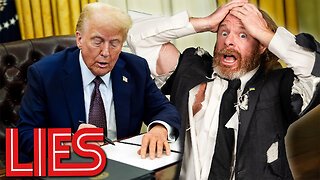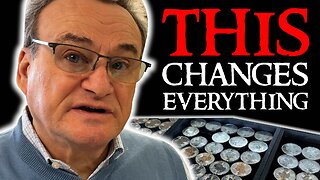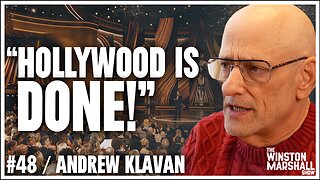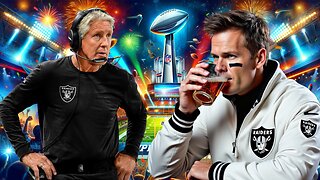Premium Only Content

The New Disney
YouTube = https://www.youtube.com/channel/UCGobVm8zABdoMmv8Fbc1wMg
Locals = https://sweethomesa.locals.com/
POPULIST REVOLT = https://populistrevolt.com
https://www.dailysignal.com/2022/10/11/surprised-by-new-disney-heres-why-you-shouldnt-be/
As Disney World continues to celebrate its COVID-19-delayed 50th anniversary, criticism of the media and entertainment giant abounds.
In addition to lamenting its new price-gouging strategy, Disney detractors cry that it’s gone woke, vowing to dramatically increase LGBTQ characters.
After the Florida Legislature earlier this year passed a bill, which protects a parent’s right to determine when his or her children learn about sexual orientation and gender identity, Disney responded with a swift rebuke. Yet Disney promises to combat similar parental rights legislation in other states.
That’s what Disney’s critics argue, denouncing its hypocrisy and, in some cases, going so far as to lay out plans for the creation of an “alternative” Disney, one that will maintain its original innocent and wholesome vision.
But just how much has Disney actually departed from its original vision? The idea behind Disneyland and especially Disney World was not simply to build a theme park for kids, but to create an immersive world where visitors could escape reality and make all their dreams come true.
“I don’t want the public to see the world they live in while they’re in the park,” Walt Disney once remarked. “I want them to feel they’re in another world.”
Central to the vision of the “happiest place on earth” is the enjoyment of sensorial pleasure. Upon arriving, one’s senses are stimulated in constantly changing and exciting ways, through thrilling rides, musical parades. Cutting-edge technology keeps the pleasures novel, allowing for increasingly more realistic levels of simulation and intensity every time you return.
Disney wanted the parks to provide this experience equally to both children and adults, whom he called “kids grown up.” Disneyland would “give meaning to the pleasure of children,” as he put it, “and pleasure to the experience of adults.” The takeaway from a trip to the parks is Peter Pan clear: Never grow up.
Less obvious of a takeaway, however, and what really makes the Disney experience unique, is its subtle inducement to passivity. Amid the sensory overload, parkgoers may not notice how little they are asked to do. Unlike hiking a mountain or reading a book—exercises of leisure that can also provide pleasure and a reprieve—Disney parks require minimal initiative and exertion on the part of guests, who come to be amused and entertained.
Even logistical details seem to take care of themselves. Monorail systems—which Disney introduced to the Western Hemisphere—shuttle visitors from park to park, and now, thanks to the Genie+ app park operators can direct traffic. Guests don’t even have to use their imaginations. Why conjure up images of what time or space travel might be like when you could ride Guardians of the Galaxy.
The controlled environment and attention to detail for which the parks are known remain the purview of “Imagineers,” park designers whose titles reflect Walt Disney’s desire to unceasingly push the boundaries of imagination. And yet, as Imagineers devise ever more realistic ways to bring fantasy to life, the visitor’s incentive to actually use his imaginative faculties diminishes. Walt Disney’s Experimental Prototype Community of Tomorrow, the epitome of his vision for Disney World, showcases the passivity on which his intricate plans must rely.
The unfinished concept he hoped to develop would involve a real city of 20,000 residents, living in neighborhoods complete with playgrounds, parks, and bike paths. But it would be planned and controlled by Disney, who would partner with American industry to implement groundbreaking technology as it emerged. The idea was to model for America what a truly progressive city might look like, offering evolving solutions for evolving problems.
Conspicuously absent from Disney’s proposal, however, are any plans for political life, an absence he confirmed was intentional in a 1966 interview with The Chicago Tribune.
“There’ll be no landowners, and therefore no voting control,” he said.
Motivated by disgust with city government inefficiency and property owner neglect, he determined to preempt urban blight by maintaining unilateral control over his city.
For centuries, Americans had tackled civic problems through voluntary associations, founding the nation’s first libraries, fire departments, schools, and hospitals through citizen-led initiatives. Firmly rejecting this tradition, Disney proposed trusting the experts, like himself, whose meticulous planning could better produce comfort, health, and safety—what he considered “the happiness of the people.”
Given Disney’s overt willingness to undermine parental authority, it’s no wonder parents are looking for alternatives.
-
 LIVE
LIVE
Scammer Payback
2 hours agoCalling Scammers Live
278 watching -
 1:10:38
1:10:38
Awaken With JP
3 hours agoJFK Files to be Released! Trump’s Boss Move - LIES Ep 75
36K34 -
 1:50:19
1:50:19
The Quartering
4 hours agoTrump NUKES The Deepstate, BANS Trans In Military & Terminates Dr. Fauci Protections!
62.3K55 -
 58:24
58:24
Uncommon Sense In Current Times
19 hours agoUnbreakable: How Jeff Younger Stands Firm Against Courts, Government, and Personal Attacks
1.71K -
 1:56:01
1:56:01
Nina Infinity
22 hours agoGOOD NEWS - Infinite Hope # 219 | Birthday Stream with Guests!
12.7K -
 15:08
15:08
Silver Dragons
23 hours agoWhat Will the TRUMP Tariffs Will Do to Silver & Gold Price?
16K6 -
 19:37
19:37
Neil McCoy-Ward
7 hours ago🚨 The CRAZIEST Moments From Davos 2025... ! 🔥
14.4K5 -
 2:57:43
2:57:43
Benny Johnson
6 hours ago🚨BREAKING: Trump Live Right Now in North Carolina Disaster Area! Real Leader | Trump Visiting LA
152K152 -
 58:14
58:14
Winston Marshall
5 hours agoHollywood Insider SPEAKS OUT On Woke Hollywood & Trump’s A-List Allies | Andrew Klavan
51.9K20 -
 44:59
44:59
Game On!
5 hours ago $1.91 earnedTom Brady's BIG GAMBLE! Pete Carroll new head coach of the Raiders! | Crick's Corner
30.5K